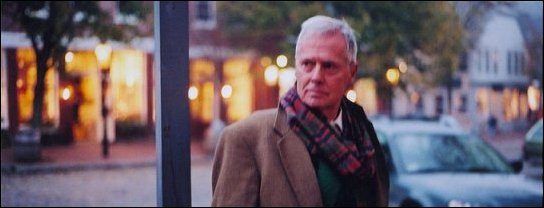Under the auspices of the Washington Vocal Arts Society’s festival “America Sings Celebration” I was able to attend a rare performance of Ned Rorem’s 1997 tour de force Evidence of Things Not Seen.

Originally commissioned by the New York Festival of Song and the Library of Congress, Evidence of Things Not Seen is a chamber piece consisting of 36 movements for four solo voices and piano. The composition includes 36 texts by 23 poets including: Roethke, Whitman, Auden, Wilde, Yeats, and Beaudelaire. As Alex Ross writes in a 2003 article, “It takes the listener on a quietly epic journey from innocence to experience and on to solitude and extinction—essentially, the entire span of a human life.”
I have lovingly borrowed the notes from an analysis by pianist Steven Blier which were featured in the liner notes of his 1999 New World Records recording of Evidence…
The musical language of the piece will be familiar to those who know and love Rorem’s music, but within that language there are many dialects. There is straightforward, flowing tonality in solo songs and in ensembles like the piercingly beautiful “Requiescat,” [Wilde] but there is also a kind of recitative/dialogue with the piano (“Now is the dreadful midnight,” [Goodman] and “Dear, though the night”[Auden]), a capella four-part hymn writing (at the end of Sections One and Two, very challenging to perform), coloristic pieces in which the musical form echoes the text in a kind of tonal onomatopoeia (“On an echoing road,” [Colette] “The Sick Wife,” [Kenyon] “The Old Men,” [Yeats] “His Beauty Sparkles” [Goodman]), and intensely rhythmic declamatory pieces (“The Comfort of Friends [Penn],” “Faith” [Doty]).
Rorem’s vocal writing presents certain challenges. He demands a long breath of his singers; one soprano muttered, “He must think we can all sustain phrases like Leontyne.” He sometimes puts the verbal stresses on unaccented notes, as French composers do. There are some tough vocal leaps, and his rhythms are not easy to master. …The many ensemble pieces are dazzling in their variety, from rich massed chords to eerie effects in octaves, from intricate contrapuntal intertwining to simple parallel movement.
If you ever have a chance to hear this work please do so. Evidence… really showcases Rorem’s exceptional talent for sweetly conveying inimitable texts. The music is truly in service to the word and the word to the feeling. Bravo to all involved!
Evidence of Things Not Seen
by William Penn
… Faith lights us, even through the grave, being the
Evidence of Things not seen. And this is the Comfort of the Good, that the Grave cannot hold them, and that they live as soon as they die. For Death is no more than the Turning of us over from Time to Eternity. Death then, being the Way and Condition of Life, we cannot love to live, if we cannot bear to die …
What other Rorem songs do you love? Have you heard or performed Evidence… before? The Sybaritic Singer wants to know. Give me all the juicy details below!

Ned Rorem was one of the people whose music — with its lyricism and wide-ranging literary connections — made me feel that composing might be for me. I can’t say I love his work without reservation, but I did and/or do connect with a good deal of it. I presented (and accompanied) some of his songs at Peabody in 2003. I also had the pleasure of seeing “Our Town” done by the Saratoga Opera a few summers ago; it was touching, particularly the love story at the heart of the play. I’m very fond of Susan Graham’s disc of selected Rorem songs. And listeners often overlook his instrumental music, which includes a Pulitzer Prize-winning work!
Judah,
I am happy to find out that Rorem influenced your decisions so much. I completely agree about Susan Graham’s disc.
I would love to bring Evidence… off the shelf more often. The poems are just so wonderful and the music really suits them all.